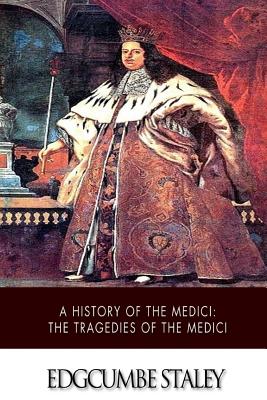A History of the Medici: The Tragedies of the Medici

A History of the Medici: The Tragedies of the Medici
Most historians credit the city-state of Florence as the place that started and developed the Italian Renaissance, a process carried out through the patronage and commission of artists during the late 12th century. If Florence is receiving its due credit, much of it belongs to the Medicis, the family dynasty of Florence that ruled at the height of the Renaissance. The dynasty held such influence that some of its family members even became Pope. Among all of the Medicis, its most famous member ruled during the Golden Age of Florence at the apex of the Renaissance's artistic achievements. Lorenzo de Medici, commonly referred to as Lorenzo the Magnificent, was groomed both intellectually and politically to rule Venice, and he took the reins of power at just 20 years old. Of all the fields that were advanced during the Renaissance, the period's most famous works were art, with iconic paintings like Leonardo's Mona Lisa and timeless sculptures like Michelangelo's David. Thus it is fitting that both Leonardo and Michelangelo were at times members of Lorenzo's court, and the Florentian ruler, who also considered himself an artist and poet, became known for securing commissions for the most famous artists of the age, including the aforementioned legends, Piero and Antonio del Pollaiuolo, Andrea del Verrocchio, Sandro Botticelli and Domenico Ghirlandaio. When Lorenzo died in April 1492, he was buried in a chapel designed by Michelangelo. From the intro: "The origin of the Medici family is lost in the mists of the Middle Ages, and, only here and there, can the historian gain glimpses of the lives of early forbears. Still, there is sufficient data, to be had for the digging, upon which to transcribe, inferentially at least, an interesting narrative. Away towards the end of the twelfth century, - exact dates are wholly beside the mark - there dwelt, under the shadow of one of the rugged castles of the robber-captains of the Mugello in Tuscany, a hard-working and trustworthy bonds-man - one Chiarissimo - "Old Honesty," as we may call him. He was married to an excellent helpmeet, and was by his lord permitted to till a small piece of land and rear his family."
PRP: 46.42 Lei
Acesta este Prețul Recomandat de Producător. Prețul de vânzare al produsului este afișat mai jos.
41.78Lei
41.78Lei
46.42 LeiIndisponibil
Descrierea produsului
Most historians credit the city-state of Florence as the place that started and developed the Italian Renaissance, a process carried out through the patronage and commission of artists during the late 12th century. If Florence is receiving its due credit, much of it belongs to the Medicis, the family dynasty of Florence that ruled at the height of the Renaissance. The dynasty held such influence that some of its family members even became Pope. Among all of the Medicis, its most famous member ruled during the Golden Age of Florence at the apex of the Renaissance's artistic achievements. Lorenzo de Medici, commonly referred to as Lorenzo the Magnificent, was groomed both intellectually and politically to rule Venice, and he took the reins of power at just 20 years old. Of all the fields that were advanced during the Renaissance, the period's most famous works were art, with iconic paintings like Leonardo's Mona Lisa and timeless sculptures like Michelangelo's David. Thus it is fitting that both Leonardo and Michelangelo were at times members of Lorenzo's court, and the Florentian ruler, who also considered himself an artist and poet, became known for securing commissions for the most famous artists of the age, including the aforementioned legends, Piero and Antonio del Pollaiuolo, Andrea del Verrocchio, Sandro Botticelli and Domenico Ghirlandaio. When Lorenzo died in April 1492, he was buried in a chapel designed by Michelangelo. From the intro: "The origin of the Medici family is lost in the mists of the Middle Ages, and, only here and there, can the historian gain glimpses of the lives of early forbears. Still, there is sufficient data, to be had for the digging, upon which to transcribe, inferentially at least, an interesting narrative. Away towards the end of the twelfth century, - exact dates are wholly beside the mark - there dwelt, under the shadow of one of the rugged castles of the robber-captains of the Mugello in Tuscany, a hard-working and trustworthy bonds-man - one Chiarissimo - "Old Honesty," as we may call him. He was married to an excellent helpmeet, and was by his lord permitted to till a small piece of land and rear his family."
Detaliile produsului










